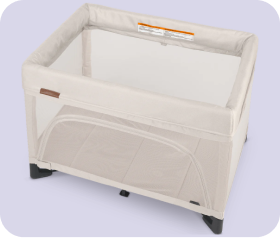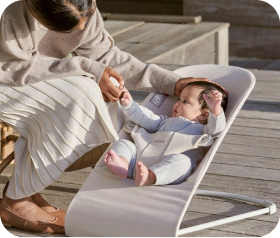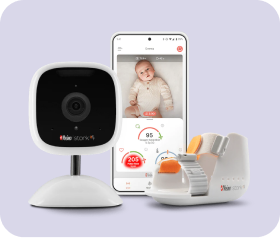
Top 10 Car Seat Safety Tips
Keeping your child safe and protected in the car is up to you, and we're here to help! Improper car seat installation and use is the leading cause of injuries and deaths for children in car crashes. The best way to keep your child safe in the car is to educate yourself on proper car seat use. Familiarize yourself with your car seat manual. Review it regularly as you'll have to make adjustments to the seat as your child grows, including buying a new car seat once its been outgrown. Education is key!
Here are our top 10 car seat safety tips:
1. Pick The Right Car Seat (for your baby's height/weight)
With so many different car seat options out there, it can be hard to know which type is right for the age/height of your child. There are three main car seat categories:
- Infant: Able to be used from birth to around 30ish pounds and is the only car seat stage able to be removed from its base and connected onto a stroller.
- Convertible: Some are able to be used from birth, but is mainly used after a child outgrows their infant car seat (around 1 year) and is used for the next 3-5 years.
- Booster: The last car seat stage and is used after they have outgrown their convertible car seat, but are still not quite big enough to sit in a regular seat in the car.
There is also the All-In-One category that provides your little one with all three stages I mentioned above. An all-in-one will be similar in size to a convertible car seat, but allows you to use it from birth to booster!
Note car seats have weight, height, and torso/head height limits. Make sure to read about these prior to purchase to make sure it's a good fit. Also, make sure to reference your car seat manual to know when it's time to make adjustments or graduate to the next seat.

2. Correct Installation Is Key
Each car seat has a unique installation process, and there is no universal method that works for all seats. To ensure your car seat is securely installed, carefully follow the manufacturer's instructions, using either the seat belt or LATCH system. The seat should be firmly installed and should not move more than an inch in any direction when tested from the base.
3. Rear-Face As Long As Possible
One key rule to always remember, is rear-facing is always safest! You want to keep your child in a rear-facing car seat until they reach the maximum height or weight limit specified by the manufacturer. This position offers the best protection for a child's head, neck, and spine in a crash.
We understand that a child may appear to have outgrown rear-facing due to long legs or similar issues, which might make it seem like it's time to switch to forward-facing sooner than recommended. However, criss-crossing a child's legs in rear facing is completely normal, and is safer than flipping to forward facing prematurely. Kids are flexible and find a comfortable spot for their legs whether that's criss-crossed, straight up on the seat back, or hanging over the sides of the seat.
Interesting fact: there are more broken legs seen in crashes with forward facing children than rear facing children! Keep their head, neck, and spine safe, keep them rear-faced!

4. Ensure Proper Harness Fit
Pinch test time! The harness straps should lie flat, and be snug on your child's shoulders and hips. The chest clip should be positioned at armpit level to keep the harness straps in the correct position. Make sure the harness straps are also not too high or too low on the child. For rear-facing, the harness straps need to be even with their shoulders or below their shoulders. For forward-facing, the harness straps need to be even with their shoulders or above their shoulders. The harness position will change as your child grows. This is all discussed in your car seat manual as well!
To make sure the car seat straps are tight, but not too tight, do the pinch test! Use your thumb and forefinger to pinch the harness webbing at the child's shoulder. If your fingers slide off easily and cannot pinch the harness together, it is tight enough. If you can pinch the harness, it's too loose and needs to be tightened.
The pinch test should be performed every time you buckle your child. A loose harness is a common mistake, and risks your child's safety in a crash.

5. Car Seats Expire! (Be sure to check yours before using)
You might not know this, but car seats have expiration dates, including car seat bases! This date varies by model, but most car seats last around 6 to 10 years from the date of manufacture. This expiration date is very important, as there are foam and other built-in components that can deteriorate after a certain amount of time, making the car seat no longer safe.
Be sure to never use an expired car seat!
6. Don't Use Aftermarket Accessories
We know, there are a lot of cool accessories out there nowadays like car seat cooling packs or extra-cushy and cute shoulder pads, but did you know that none of them are safe for your car seat? Only use items that have been crash tested with your specific car seat. This even includes car seat mats! Car seat mats that were not designed to go with your car seat, can lead to an improper and unsafe installation.
I'm sure you're asking, but what's the big deal?! Well, any items that have not been safety tested with your car seat could interfere with its safety features. Each car seat is designed in a specific way to maximum protection in a crash!
Only use accessories recommended by the manufacturer and confirmed to be tested with your car seat!
7. Secure Loose Items In Your Car (or simply don't have them)
Keep the car interior free of loose objects that could become projectiles in a crash. This includes toys, bags, and other items that could injure your child. I am sure you are thinking that a small item might not be able to do much when in a crash, but think about the force of a crash.
Crash force is equal to the weight of an item (or person) multiplied by the speed of the vehicle. For example, in a 40mph crash, a 2 lb drinking cup filled with liquid becomes an 80 lb projectile force flying around in the car!
Secure those items!
8. Check For Recalls
Register your car seat with the manufacturer to receive notifications of recalls. You can also check for recalls on the National Highway Traffic Safety Administration (NHTSA) website.
9. Be Cautious of Secondhand Car Seats
While there is nothing wrong with a car seat that has been previously used, there are a few things you want to make sure of before using it with your little one.
- Make sure the car seat has never been involved in a crash: Visually looking at a car seat will not always show if there are signs of it being involved in a crash. Make sure whoever you receive the car seat from you can trust with your child's life. Even though a car seat can look fine, any size crash can compromise key internal pieces of a car seat!
- Check expiration date: You want to make sure the car seat is not already expired, and that you have enough time to use of the car seat. Manufacturing dates can vary greatly by make and model.
10. Keep The Car Seat In The Back
The safest place for a car seat is in the back seat, away from airbags. Never install a car seat in the front seat. If possible, place it in the middle of the back seat for additional protection away from the doors of the car. However, the safest spot for your car seat is the back seat spot you can get the safest, most secure install. Use those advanced safety features like rigid latch or load legs!

Conclusion
One of the best things you can do to keep your child safe is to educate yourself on car seat safety. Read those manuals, and read them again! Follow car seat safety accounts too! Knowledge is power! And remember, we are here to help. We love to help families find their perfect car seat, and help with any installation or product questions.
Shop Convertible Car Seats here!
Shop All-in-One Car Seats here!
Have more questions about car seat safety? Contact us at customercare@strolleria.com or chat with us today!








































